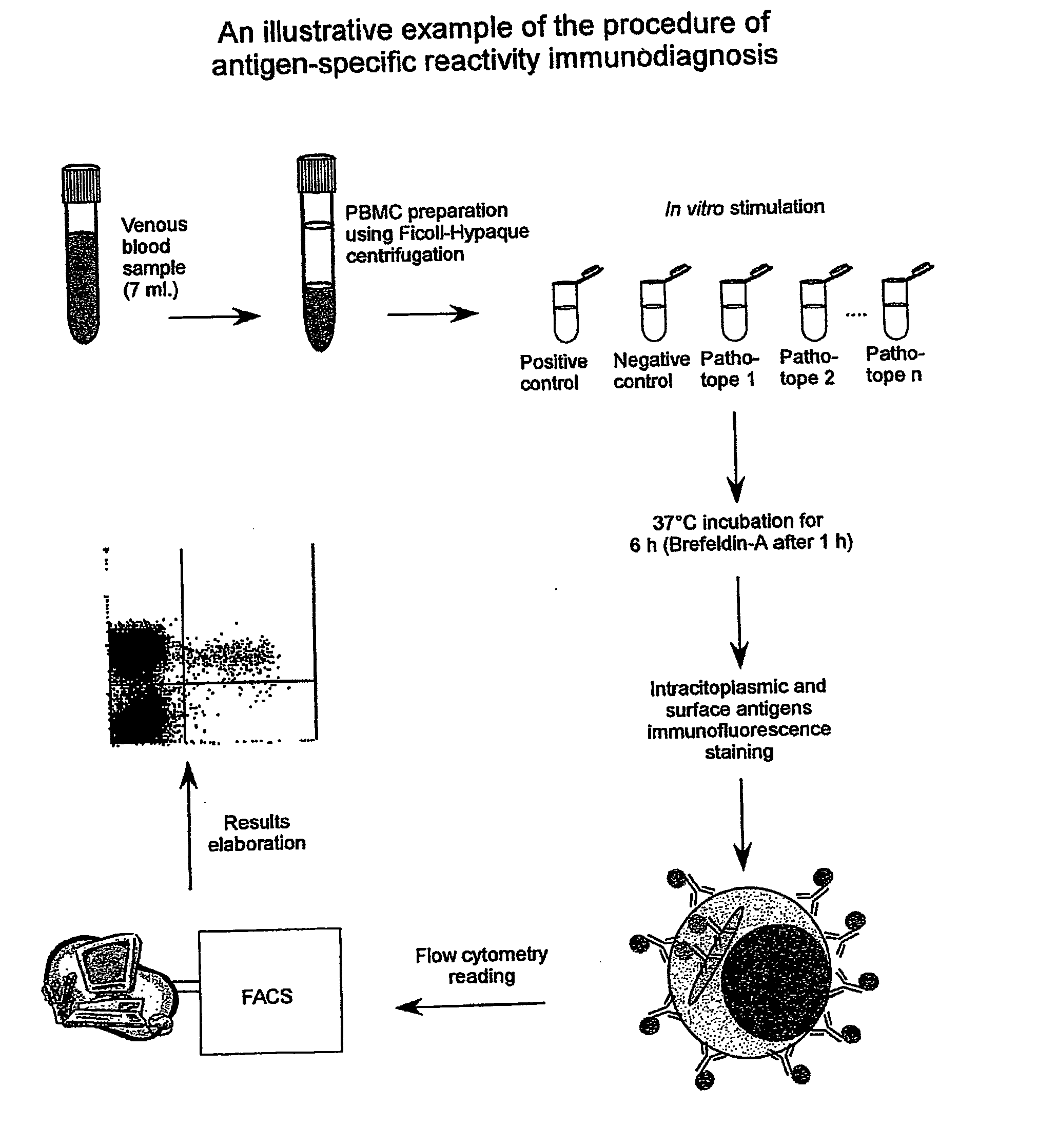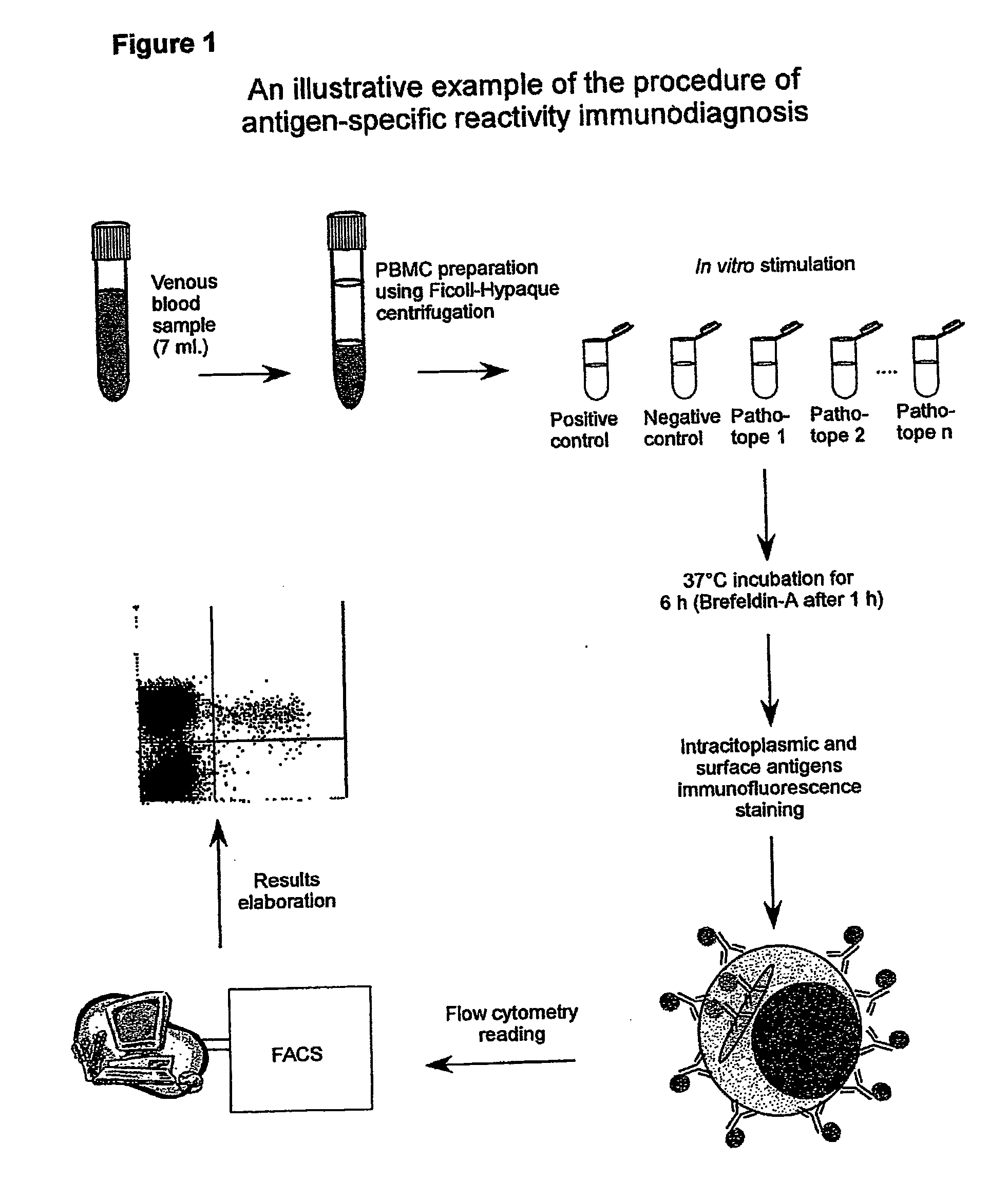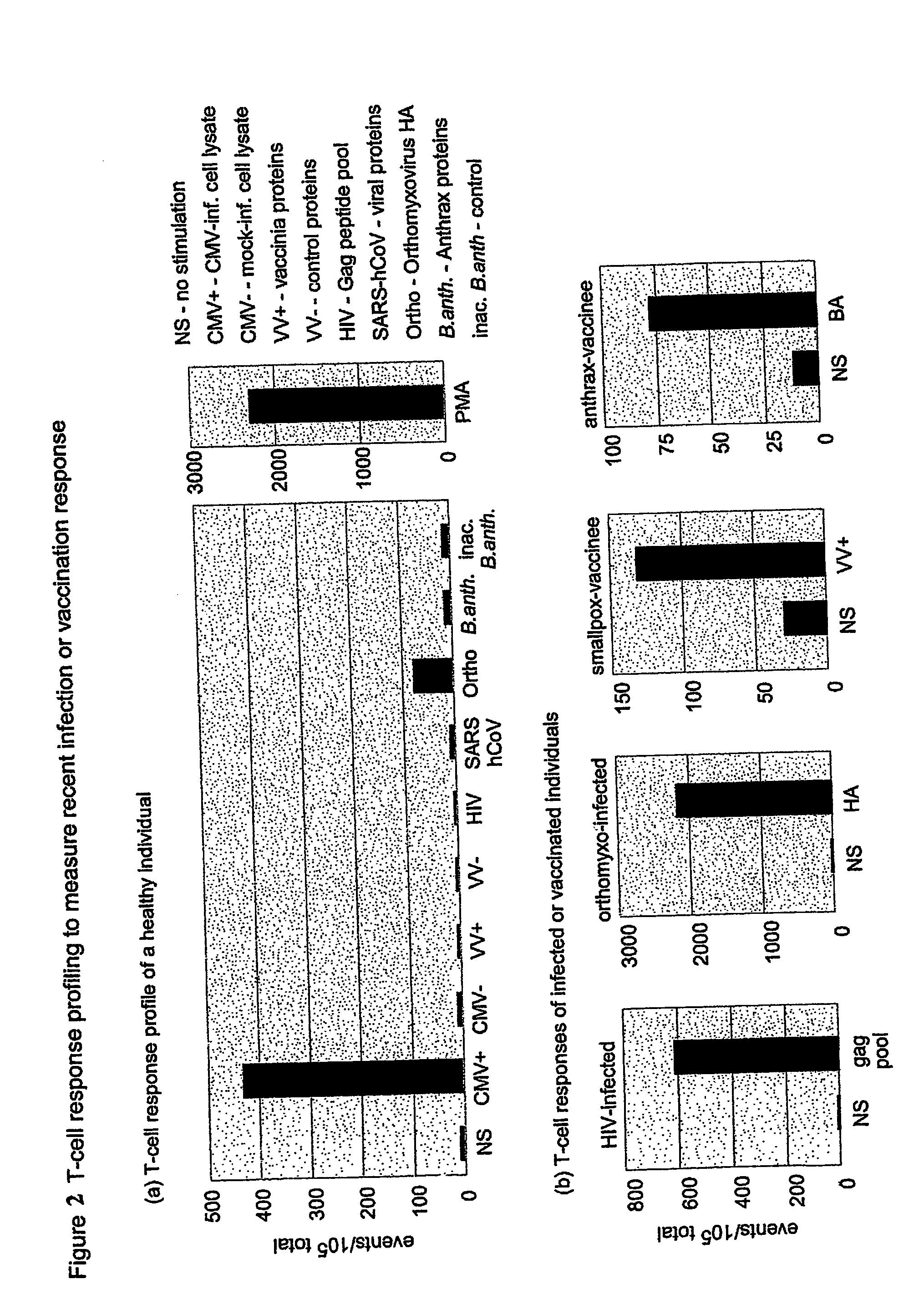Method and diagnostic tests based on flow cytometric analysis of antigen-specific t lymphocytes
a flow cytometric and antigen-specific technology, applied in the direction of material testing goods, measurement devices, instruments, etc., can solve the problems of increasing the total number of cases, increasing the cost of intervention, and remaining concerned about orthopoxvirus
- Summary
- Abstract
- Description
- Claims
- Application Information
AI Technical Summary
Benefits of technology
Problems solved by technology
Method used
Image
Examples
example 1
Procedure of Execution of the Patho-tope Arrays T Lymphocytes Immuno-diagnosis Test by Flow-cytometry.
[0265] The following specific monoclonal antibodies for human antigens were used for the execution of the test: purified anti-CD28e anti-CD49d as co-stimulator factors during the cellular cultures; anti-IFN-gamma conjugated with fluorescein (FITC);
[0266] anti-CD3 conjugated with phycoerythrin (PE); anti-CD45 conjugated with phycoerythrin-cyanin-5(Cy-5) and a isotypic control (IgG1) conjugated with FITC.
[0267] The antibodies are used at the concentration of 0,25 μg / ml. Each new batch of antibodies was tested, and the antibodies mixtures (mix) were set-up ready for use in 1 mL microcentrifuge tubes. Specifically, each antibody was used in saturating conditions to exclude differences in the samples during the staining. The tubes were then placed in a Speedvac freeze-dryer until complete evaporation of the solvent (20 min). At the moment of the use each mix was reconstituted by addin...
example 2
Elaboration of Results and Formulation of a Diagnostic Response
[0269] A T-cell response profile was developed for several individuals (see FIG. 1a). A marked, specific response to CMV antigens was seen in each of the healthy donor panels. There was a large individual variability, but sample duplicates confirmed specificity. Neither of these results were unexpected, as the prevalence of seropositivity for CMV in Italy is quite high and the response levels were expected to vary, depending on the individual. Pathogen-infected or recently vaccinated individuals were used as controls to confirm the reactivity of the antigen mixes for the response panel. As shown in FIG. 1b, a robust response was observed in infected or vaccinated individuals for their respective pathogens.
[0270] A small, but reproducible response was seen to the recombinant SARS protein pool in a number of healthy donors (FIG. 2a). Selected epitopes in our preparation are not unique to the class IV coronavirus (SARS-hC...
example 3
Description of the Procedure using as Ag-Sp Formulations a Raw Antigenic Extract, Recombinant Proteins, or Mixtures of Peptides
[0271] In this experiment different antigenic preparations were used: (a) raw protein extract, (b) purified or recombinant proteins, (c) mixtures of peptides. [0272] (a) As an example, the methodology of purification of antigenic extract from fibroblast or VERO cells infected with the vaccinia virus is reported. The cells susceptible to the infection were transferred in a tube containing vaccinia virus to a multiplicity of infection (MOI)=100. The incubation was performed at 37° C. until 50% of the cytopathic effect was found. At that time, a centrifugation to 850 g×15 min was performed followed by fixation in PFA 2% for 10 min. at 4° C. After three washes in PBS, the cell pellets were sonicated for 20 min at 4° C. in PBS, centrifuged at 850 ×g for 15 min at 4° C. and aliquoted at −20° C. Each new antigenic preparation batch must be checked to find the best...
PUM
| Property | Measurement | Unit |
|---|---|---|
| concentration | aaaaa | aaaaa |
| frequency | aaaaa | aaaaa |
| density | aaaaa | aaaaa |
Abstract
Description
Claims
Application Information
 Login to View More
Login to View More - R&D
- Intellectual Property
- Life Sciences
- Materials
- Tech Scout
- Unparalleled Data Quality
- Higher Quality Content
- 60% Fewer Hallucinations
Browse by: Latest US Patents, China's latest patents, Technical Efficacy Thesaurus, Application Domain, Technology Topic, Popular Technical Reports.
© 2025 PatSnap. All rights reserved.Legal|Privacy policy|Modern Slavery Act Transparency Statement|Sitemap|About US| Contact US: help@patsnap.com



